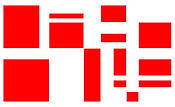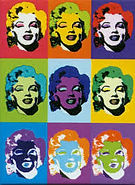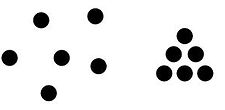
intro to design and creative thinking
The principles of design suggest how a designer can best arrange the various elements on a page to connect the seperate elements to one another and into a unified, well balancedl design.
Principles of Design
Proximity
Contrast.
Alignment
Repetition.
Proximity creates a bond between page elements. How close together objects are placed can suggest a relationship. Objects placed further apart can suggest differences.
Contrast occurs when two parts of a design or page layout are different. The greater the difference, the greater the contrast.
Contrast is one way of emphasizing parts of a layout or guiding the readers' eye to specific areas of the page.
One of the principles of design, alignment refers to lining up the top, bottom, sides, or middle of text or graphic elements on a page.
Horizontal alignment includes (see illustration):
-
flush-left (also called left-justified or ragged right),
-
flush-right
-
(also called right-justified or
-
ragged left),
-
centered, and
-
fully justified
Repetition is the duplication of the same element or style throughout a layout or document.Repetition
is often paired with or used to mean the same thing as consistency in a discussion of good graphic design principles.



